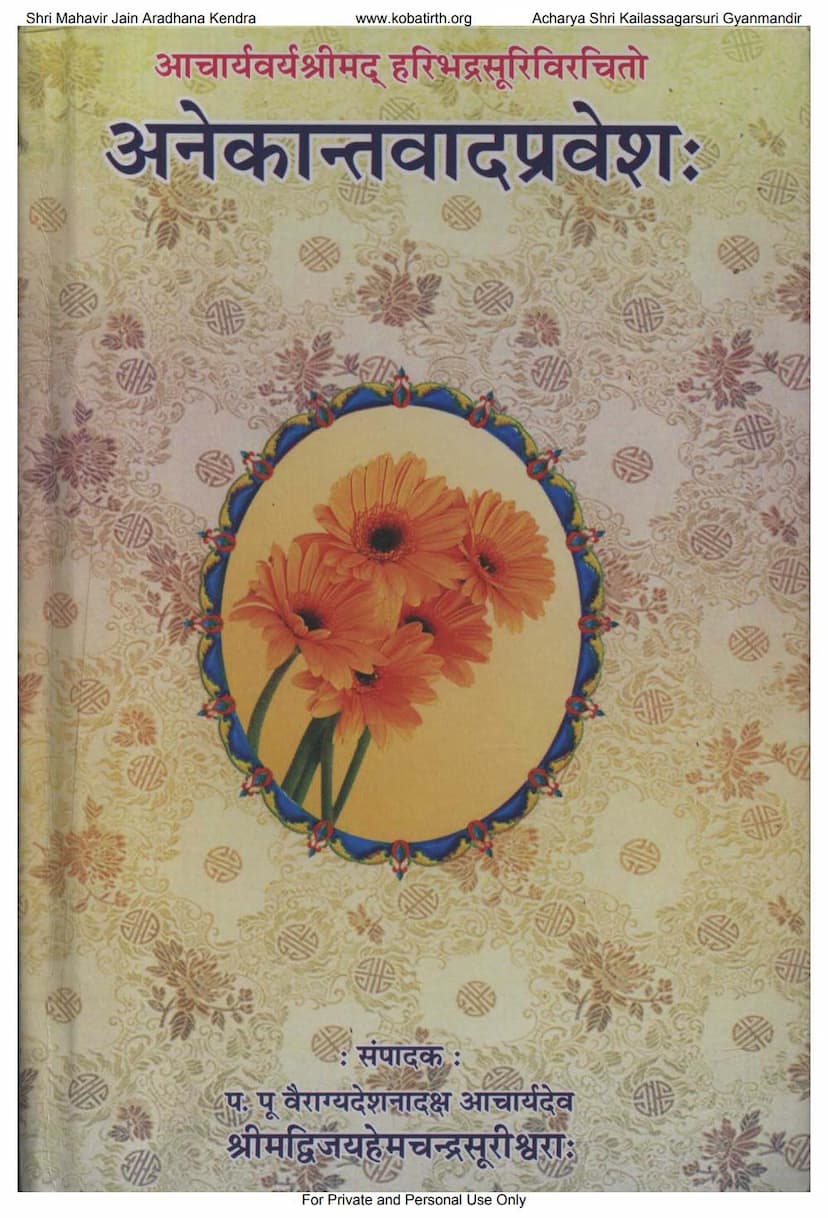Anekantvad Pravesh
Added to library: September 1, 2025

Summary
Here's a comprehensive summary of the Jain text "Anekantvad Pravesh" based on the provided pages:
Book Title: Anekantvad Pravesh (Meaning: Introduction to Anekantavada) Author(s): Acharya Haribhadrasuri (Original Text), Acharya Vijay Hemchandrasuri (Editor) Publisher: Jinshasan Aradhana Trust Catalog Link: https://jainqq.org/explore/020041/1
Overview:
"Anekantvad Pravesh" is a foundational Jain text authored by the venerable Acharya Haribhadrasuri, with this particular edition meticulously edited and presented by Acharya Vijay Hemchandrasuri. The book serves as an introductory guide to the core Jain philosophical principle of Anekantavada, which emphasizes the multiplicity of viewpoints and the existence of multiple truths in reality. The publication aims to make this profound concept accessible to aspiring students of Jain philosophy.
Key Themes and Content:
-
Introduction to Anekantavada: The central theme is the explication of Anekantavada (the doctrine of manifold aspects or non-one-sidedness) as a solution to the limitations of "Ekantavada" (one-sided or absolute viewpoints). The text uses a simple analogy of two friends arguing about a glass half-full versus half-empty to illustrate how different perspectives can both be valid simultaneously. It posits that Ekantavada is the root of all problems, while Anekantavada is the seed of all solutions.
-
Rejection of Ekantavada: The book systematically deconstructs various Ekantavadi (one-sided) arguments that attempt to deny Anekantavada. This involves addressing and refuting five specific Ekantavadi positions presented as "Purva Paksha" (preliminary arguments or opposing views):
- Sad-Asad Ekantavada: The view that something is either absolutely real (sat) or absolutely unreal (asat), but not both.
- Nityanityata Ekantavada: The view that something is either absolutely eternal (nitya) or absolutely non-eternal (anitya).
- Samanya-Vishesha Ekantavada: The view that reality is either solely universal (samanya) or solely particular (vishesha).
- Abhilapya-Anabhilapya Ekantavada: The view that something is either expressible (abhilapya) or inexpressible (anabhilapya), but not both.
- Mukti in Ekantavada: The claim that liberation (mukti) can only be achieved through an Ekantavada viewpoint.
-
Defense of Anekantavada: Acharya Haribhadrasuri, through logical reasoning and scriptural references, refutes each of the Ekantavadi arguments presented. The text demonstrates how reality, when viewed through the lens of Anekantavada, can be simultaneously sat (real from one perspective) and asat (unreal from another), nitya (eternal from the perspective of substance) and anitya (non-eternal from the perspective of mode), etc. The refutation is presented in a structured manner, with the author systematically dismantling the opposing viewpoints.
-
The Role of Syadvada: While not explicitly a detailed treatise on Syadvada (the doctrine of conditional predication), the underlying principle is evident throughout. Syadvada, which introduces the qualifier "syat" (in a certain way) to statements, is the linguistic tool that enables the expression of Anekantavada. The text implicitly shows how qualifying statements allows for the co-existence of seemingly contradictory truths.
-
Philosophical Nuances: The text delves into complex philosophical arguments, exploring concepts such as the relationship between substance (dharmi) and attributes (dharma), the nature of perception, causality, and the relationship between language and reality. It critiques the limitations of exclusive logical systems and highlights the necessity of accepting multiple truths to grasp the totality of reality.
-
Commentary and Translation: The edition includes a commentary (tippanaka) by an unknown ancient scholar, which clarifies difficult words and concepts in the original text. It also features a translation by Manilal Nabhubhai Dwivedi (B.A.), making the work accessible to a wider audience.
-
Editorial and Publishing Efforts: The introductory pages highlight the efforts of the Jinshasan Aradhana Trust in re-publishing this valuable text, which was found in a dilapidated state. The trust is dedicated to the revival and dissemination of ancient Jain scriptures, having already re-published around 350 works. The publication acknowledges the support of various Jain organizations and individuals who contributed to this endeavor.
Significance:
"Anekantvad Pravesh" is crucial for understanding the epistemological and ontological foundations of Jainism. It serves as an accessible entry point to the complex doctrine of Anekantavada, demonstrating its logical coherence and its relevance in resolving philosophical disputes and understanding the multifaceted nature of reality. The work is considered essential for anyone seeking to grasp the intellectual depth of Jain philosophy.